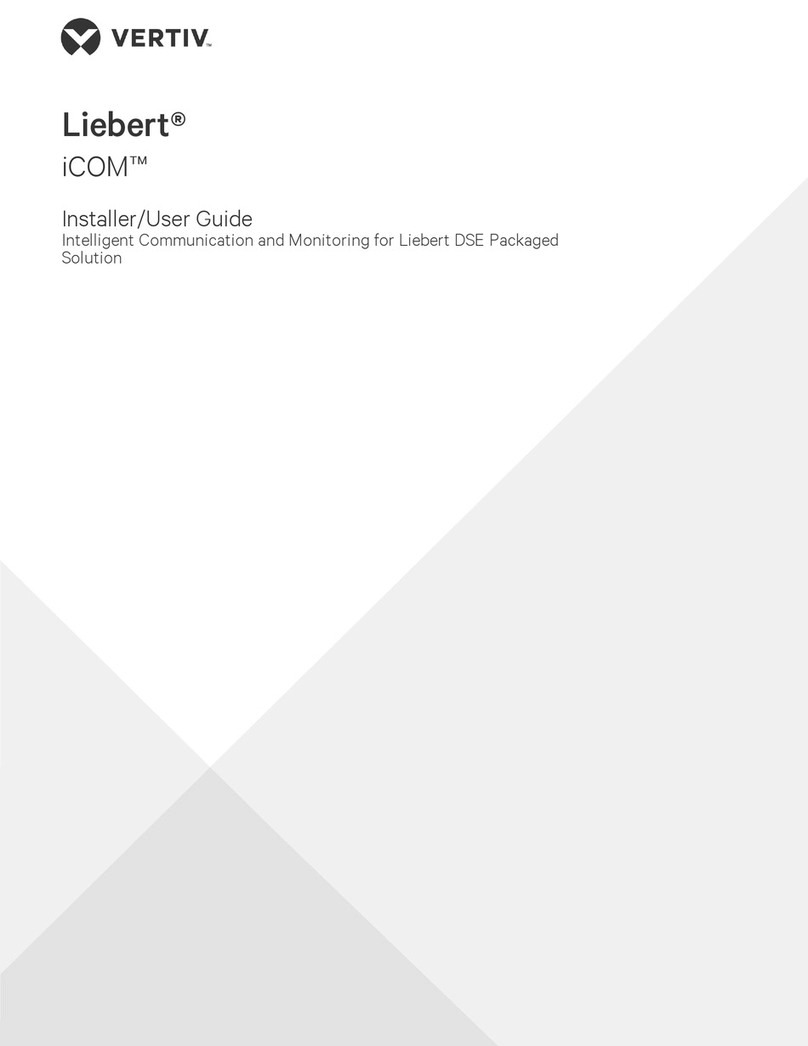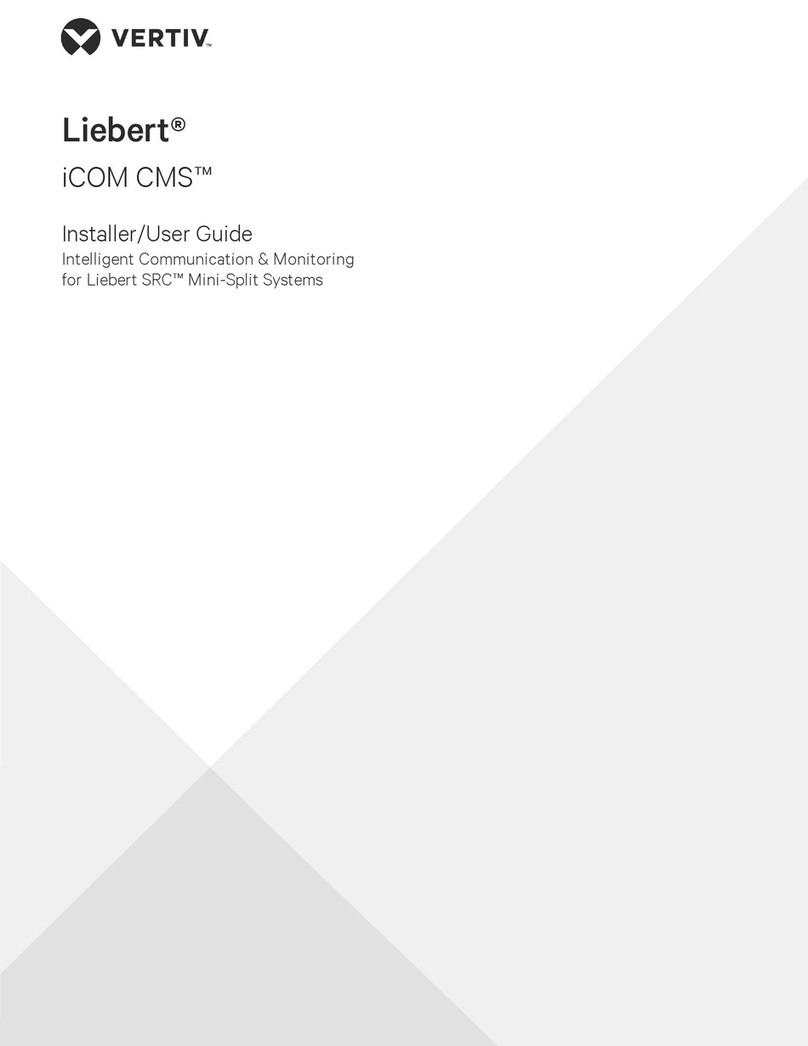
1 IMPORTANT SAFETY INSTRUCTIONS
SAVE THESE INSTRUCTIONS
This manual contains important safety instructions that should be followed during the installation and
maintenance of the Liebert®DSE. Read this manual thoroughly before attempting to install or operate
this unit.
Only qualified personnel should move, install or service this equipment.
Adhere to all warnings, cautions, notices and installation, operating and safety instructions on the unit
and in this manual. Follow all installation, operation and maintenance instructions and all applicable
national and local building, electrical and plumbing codes.
WARNING! Arc flash and electric shock hazard. Open all local and remote electric power-supply
disconnect switches, verify with a voltmeter that power is Off and wear appropriate,
OSHA-approved personal protective equipment (PPE) per NFPA 70E before working within the
electric control enclosure. Failure to comply can cause serious injury or death. Customer must
provide earth ground to unit, per NEC, CEC and local codes, as applicable. Before proceeding
with installation, read all instructions, verify that all the parts are included and check the
nameplate to be sure the voltage matches available utility power. The Liebert® controller does
not isolate power from the unit, even in the “Unit Off” mode. Some internal components require
and receive power even during the “Unit Off” mode of the controller. The factory-supplied
disconnect switch is inside the unit. The line side of this switch contains live high-voltage. The
only way to ensure that there is NO voltage inside the unit is to install and open a remote
disconnect switch. Refer to unit electrical schematic. Follow all local codes.
WARNING! Risk of electric shock. Can cause serious injury or death. Open all local and remote
electric power supply disconnect switches and verify with a voltmeter that power is off before
working within the component electric-connection enclosures. Fan-motor controls can
maintain an electric charge for 10 minutes after power is disconnected. Wait 10 minutes after
power is verified as off before working within the fan electric control/connection enclosures.
WARNING! Risk of over-pressurization of the refrigeration system. Can cause explosive
discharge of high-pressure refrigerant, loss of refrigerant, environmental pollution, equipment
damage, injury, or death. This unit contains fluids and gases under high pressure. Use extreme
caution when charging the refrigerant system. Do not pressurize the system higher than the
design pressure marked on the unit's nameplate. For systems requiring EU CE compliance
(50Hz), the system installer must provide and install a pressure relief valve in the high side
refrigerant circuit that is rated same as the refrigerant high side “Max Allowable Pressure”
rating that is marked on the unit serial tag. Do not install a shutoff valve between the
compressor and the field installed relief valve. The pressure relief valve must be CE-certified to
the EU Pressure Equipment Directive by an EU “Notified Body.”
WARNING! Risk of very heavy 125-lb (56.7-kg) fan modules dropping downward suddenly. Can
cause injury or death.
Support fan modules before removing mounting hardware. Use caution to keep body parts out
of the fan modules pathway during repositioning. Only properly trained and qualified personnel
should work on this equipment.
1 Important Safety Instructions 5
































